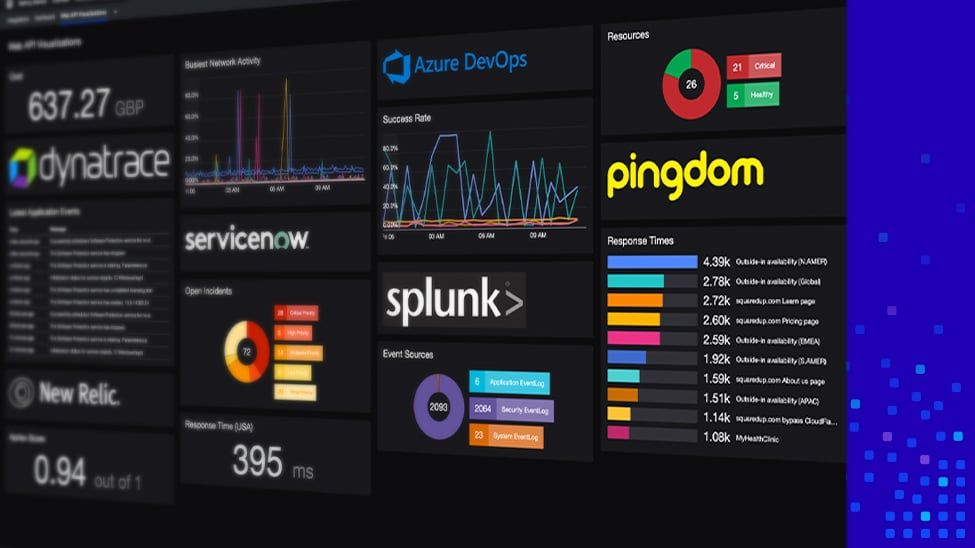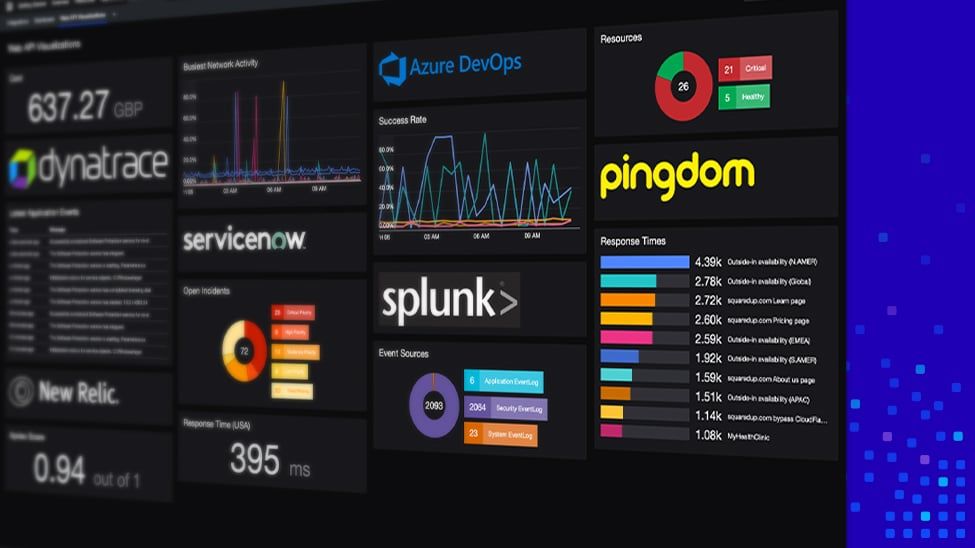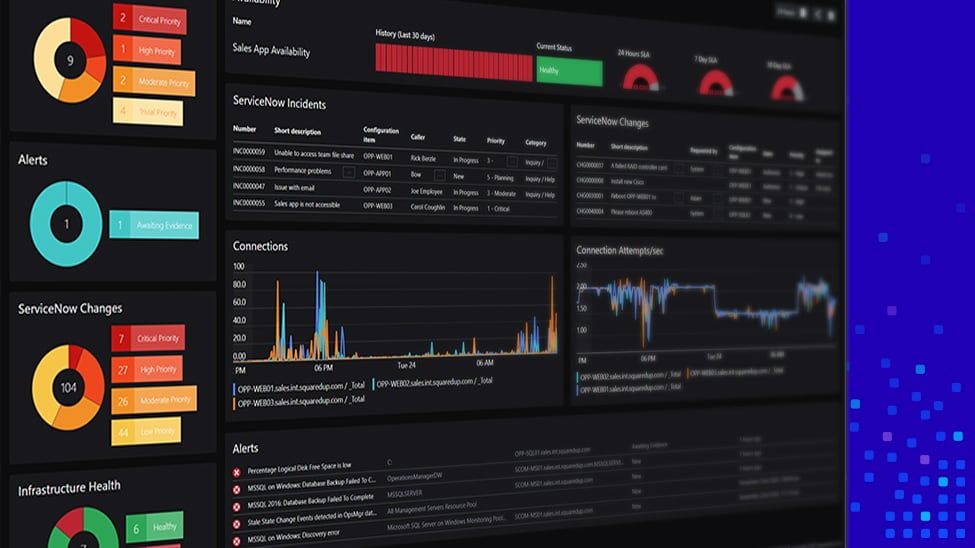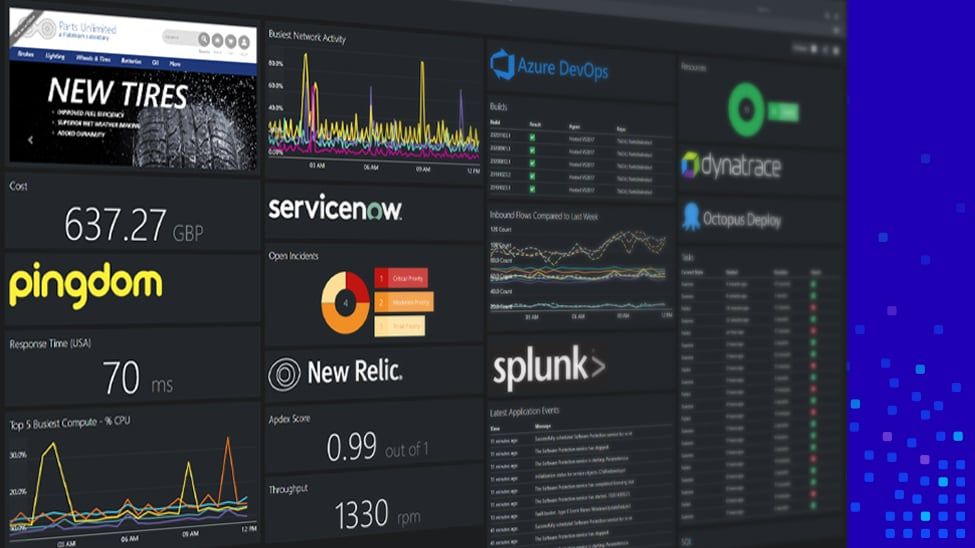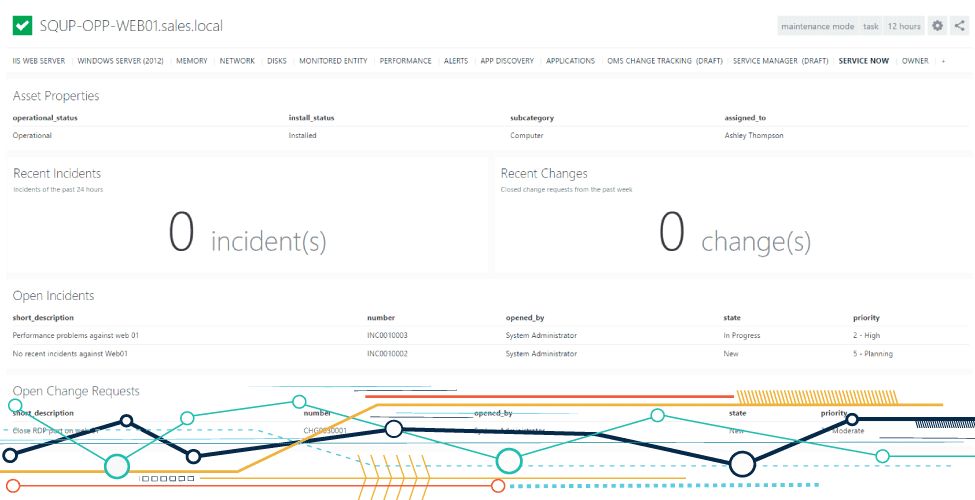
Introducing our new WebAPI tile (ft. ServiceNow integration)
Wow, May was a busy month! So much so that we took our foot off the gas when it came to our v3.1 feature blogs but, fear not, we're back and ready to introduce you to our WebAPI Tile - featuring ServiceNow integration.
Introducing our WebAPI Tile
A major new innovation with v3.1 is the introduction of our WebAPI tile, which allows you to query any REST based WebAPI to pull in live data and display it on your Dashboards and Perspectives, much as you can using the SQL or OMS tiles.
Today, most modern applications have JSON based Web APIs, especially SaaS-based applications, and there are also a number of other devices / end-points that can be queried this way. By accessing these WebAPIs you can integrate valuable data residing in a multitude of other tools - whether that’s a CMDB, Service Desk tool or other monitoring or log analytics platforms – with your SCOM data in SquaredUp.
ServiceNow is a great example of this and, using the WebAPI tile, you can create Dashboards and Perspectives that embed information from your IT Service Management (ITSM) tool into your monitoring experience. What’s more, because v3.1 allows you to use values from the SCOM Object targeted by a Perspective as the parameters within a WebAPI call, we can easily build Perspectives like the one below:


As you can see, within the context of a single server (WEB01), we’ve dynamically pulled in the following information about this specific server from ServiceNow;
- Asset Properties
- Recent Incidents
- Recent Changes
- Open Incidents
- Open Change Requests
Because v3.1 supports parameterised / dynamic queries, you only need to design your Perspective once, and can then apply it to, let’s say, any entire Class of Objects.
For example, because this works on any Object, we can do the same for Distributed Applications, allowing us to see not only the health of the components making up our application, but also open incidents, ownership, contact information and the maintenance schedule against any given application. Having visibility of, for example, the number of open Service Desk tickets against an application provides a great way of immediately correlating whether infrastructure issues are impacting on end users yet. Similarly, by surfacing who the service owner is, it's immediate apparent who we need to contact / escalate the issue to.
Of course, this is all customisable, allowing you to pull in whatever information you want from either ServiceNow or a wide array of other relevant tools with REST APIs.
The short video shows how seamlessly ServiceNow data can be integrated and how quickly SquaredUp can pull back ServiceNow data into your Dashboards and Perspectives; there’s no heavyweight data synchronisation here, just pulling the data you need, on-demand, so you can put the right data in front of the right users at the right time.

The WebAPI tile comes in both a table and scalar variant, and supports several popular authentication methods including Basic, OAUTH2 (supporting authorization token, client credentials and password), and Windows (integrated) authentication.
ServiceNow is just one example use-case for the WebAPI Tile and our customers are already well underway integrating a range of external data sets into their SquaredUp dashboards, including systems like Cisco Prime where it’s not necessarily practical / possible to monitor them via SCOM directly. Hopefully you can see the huge potential for different integrations using the WebAPI Tile for yourself, but stay tuned for more news from the community as we begin to share other customers’ integration scenarios.
To get a better idea of how you can use the power of parameterised queries with the WebAPI tile (and also OMS and WebAPI tiles), you can skip straight to the relevant part of the recording of our v3.1 Release Webinar.
If you’re excited about the possibilities of ServiceNow integration and want to tell us about your specific integration scenarios, let us know more!
If you’re not underway with SquaredUp yet, you can request a free 30 day trial.


